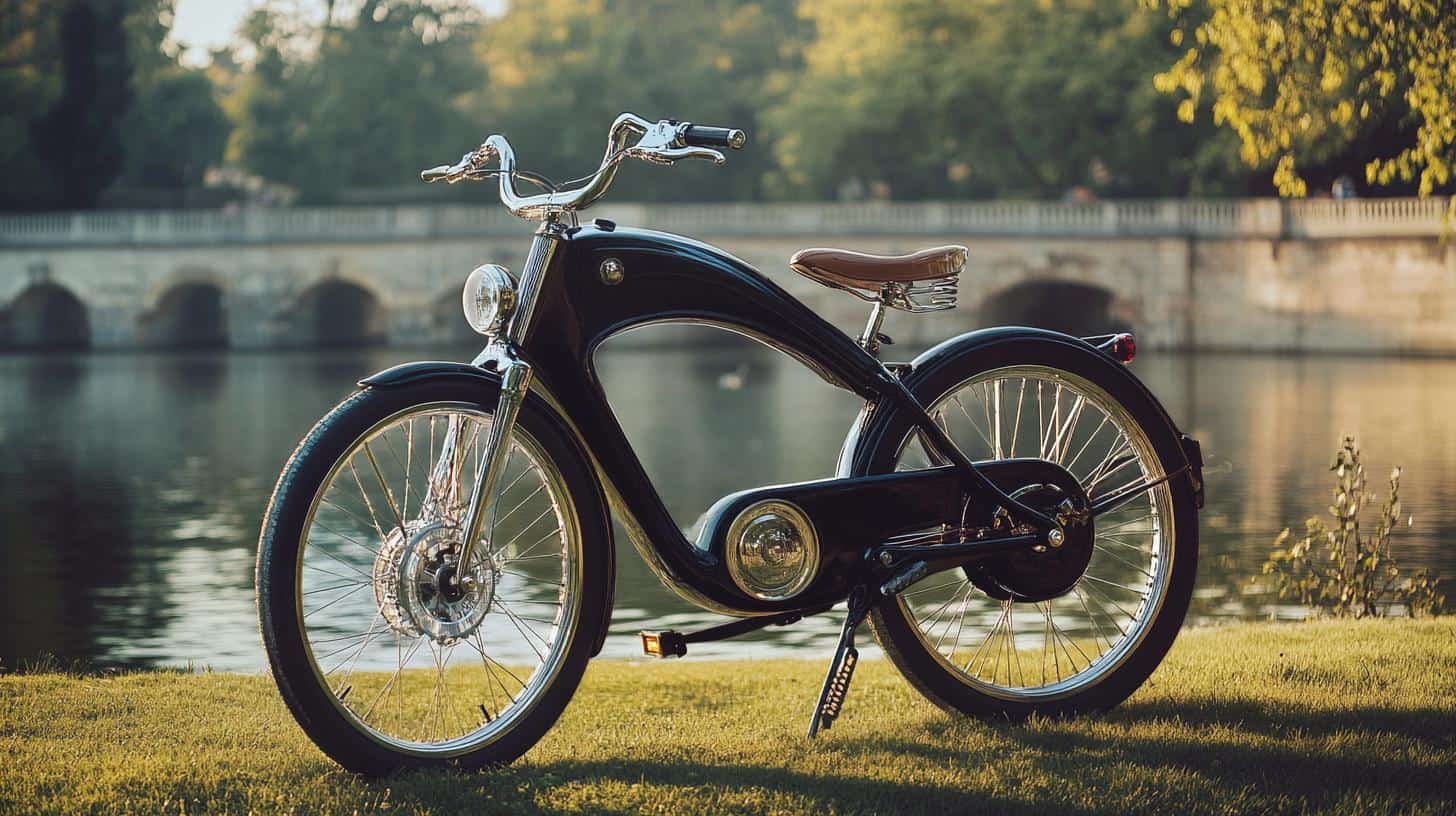Solex, a brand ingrained in the cultural fabric of France since its inception in 1946, continues to innovate while honoring its storied past. Originally known for the iconic Vélosolex, a lightweight motorized bicycle powered by a small gasoline engine, the company captured the essence of post-war France with a blend of style and practical design.
Embracing the Electric Revolution
In a leap towards modernity, Solex has embraced electric technology, replacing its traditional engine with a more environmentally friendly alternative. Despite this change, the brand retains its reputation for timeless design and effortless functionality. The contemporary Solex electric bikes feature minimalist aesthetics reminiscent of their historic predecessors, now powered by Bafang motors and boasting long-lasting 500 Wh batteries. Designed with deceptive simplicity, they maintain the classic look while offering modern cycling convenience.
The Versailles Connection
Highlighting the enduring allure of French sophistication, Solex’s recent partnership with the Château de Versailles exemplifies a union of past and present elegance. This collaboration underscores the brand’s commitment to combining heritage with contemporary design. The legendary Versailles serves as the perfect backdrop for Solex’s limited-edition electric bikes, which marry royal aesthetics with modern-day efficiency.
Featuring three distinct models, this exclusive series showcases vibrant colors inspired by the Château: the bright orange Flamboyant pays homage to the palace’s Orangerie, while Bleu roi and Violette echo the timeless hues associated with royal luxury. Available from October 15th for €1999, these bikes can be found at Solex retailers, continuing to embody the essence of French chic in a modern world.
The Modern Renaissance of Solex: Beyond Electric Bikes
The name Solex may historically ring a bell for its post-war Vélosolex, but there’s a lesser-known narrative that extends beyond its famous motorized bicycles. Our curiosity about modern-day Solex takes us on a journey through an unexpected blend of technology and design that’s reshaping communal and personal transportation options in innovative ways.
Expanding Horizons: From Pedal to Pedestrian Travel
Beyond its iconic electric bikes, Solex is delving into uncharted territories by exploring the creation of e-scooters and other forms of micro-mobility transport. This not only marks a transition for the brand but opens fresh possibilities for urban commuters looking for versatile, congestion-beating solutions. Cities like Paris are increasingly favoring biking and scooter lanes, making such technology all the more relevant. These developments herald a future where environmentally sound travel becomes a staple across European cities.
How Communities Benefit
Cities and communities stand to gain immensely from Solex’s modern innovations. Increased adoption of electric transport solutions reduces carbon footprints, decreases urban noise pollution, and alleviates traffic congestion. As urban spaces seek to become more sustainable, Solex’s push toward expanding its electric lineup could spark shifts in public policy that further benefit citizens, especially in dense urban environments that aspire not only for sustainability but also for improved quality of life.
Are E-Bikes a Universal Solution?
Though electric bikes are celebrated for their eco-friendliness, they also ignite debate over accessibility and infrastructure challenges. Are cities around the world prepared for an influx of electric bicycles and e-scooters? Will there be sufficient charging stations and secure parking options? Solex, while an innovator, prompts important discussions on improving urban planning to integrate new forms of micro-mobility.
Interesting and Controversial Aspects
While Solex’s pivot to electric vehicles is undeniably captivating, controversies are not far behind. The high price point of their limited editions, like the ones inspired by Château de Versailles, raises questions about accessibility and elitism in eco-friendly transportation. Is sustainability only for the affluent, or will these technologies eventually broaden their appeal and affordability?
What Lies Ahead?
As Solex ventures forward, one question remains: how will these new transport forms affect global commuting habits? With innovations like shared e-bike schemes and subscriptions, will traditional cycling and public transportation systems adapt or diminish?
For those interested in the intersection of heritage and modern design, Solex’s developments are worth following. Discover more about Solex’s visionary choices at the official Solex website, Solex World.
In conclusion, Solex may have started as a nostalgic symbol of post-war France, but today, it serves as a beacon of forward-thinking mobility. Whether the hero of future cities or the protagonist in transportation technology controversies, the brand’s journey is a riveting chapter in mobility evolution.







